2020 is proving to be a…ahem…wild year. The unusual, big eyed creatures we know as the PERIODICAL CICADA or CYCLICAL CICADA–particularly those known as Brood IX by U.S. Entomologists–made their debut in the late spring of 2020. Male cicadas make a lot of noise to attract a mate and in big brood years, that can be a lot of noise. (NPR’s CICADA article may be of interest!)
While big cicada emergence years like this one and the one in 2013 are noteworthy, that doesn’t mean that cicadas can’t be found each year. Otherwise, the impressive CICADA KILLER WASP would have a long wait. Understanding the difference between three large insects of the hornet and wasps family has never been more important: 1) cicada killer wasp, 2) European hornet, and 3) Asian giant hornet.
As of August, 2020, there are NO ASIAN GIANT HORNETS in the northeast. What you might see are Cicada Killers or European Hornets, so we’re back with more photos. (see our blog post Dog Day Cicadas and the Wasps that do them in!)
Below: CICADA KILLER WASP: Earlier this year, ‘murder hornets’ became a big topic. To bring some wisdom to the discussion, we provided some facts (see blog post: Asian Giant Hornets). Now, with August being the prime time to see cicada killer wasps and European hornets in action, murder hornets are news again, and still not in NY!
Please don’t kill these large but very low risk cicada killer wasps.
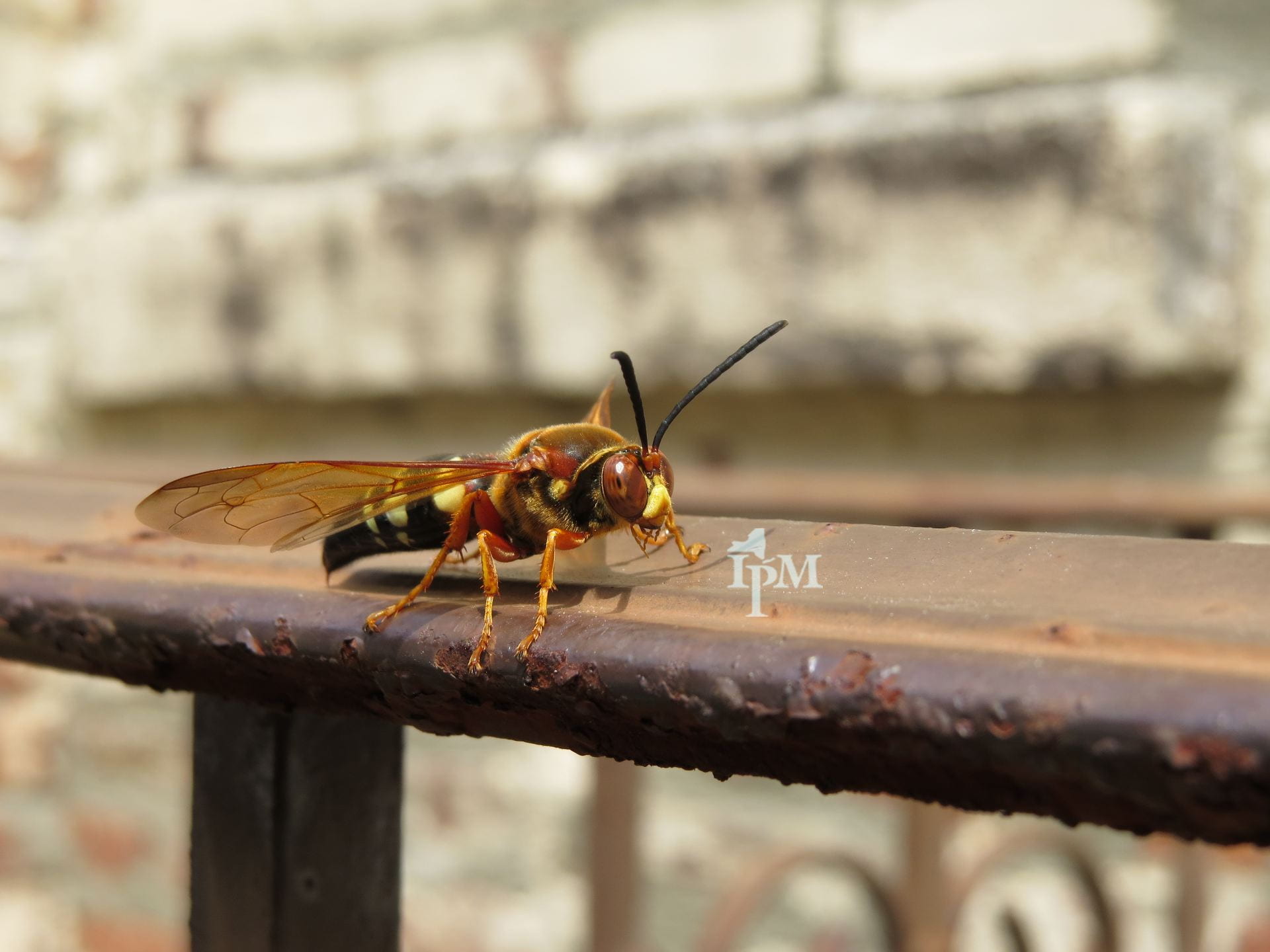
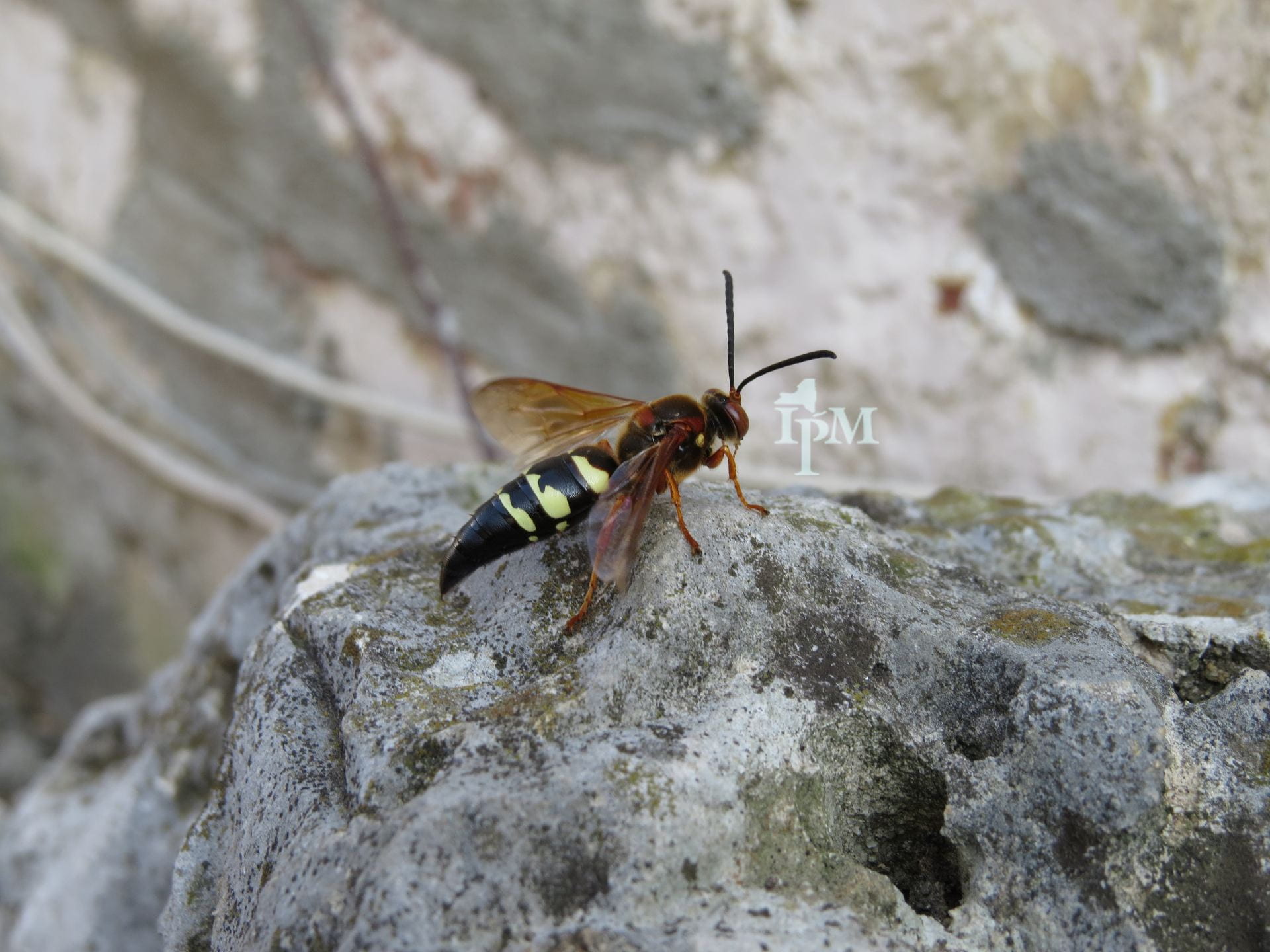
Another big one? EUROPEAN HORNETS (below): Workers 1″, Queens up to 1.4″ Abdomens are not as pointy as the Cicada killer wasp and you’ll notice a lot of yellow on abdomen.
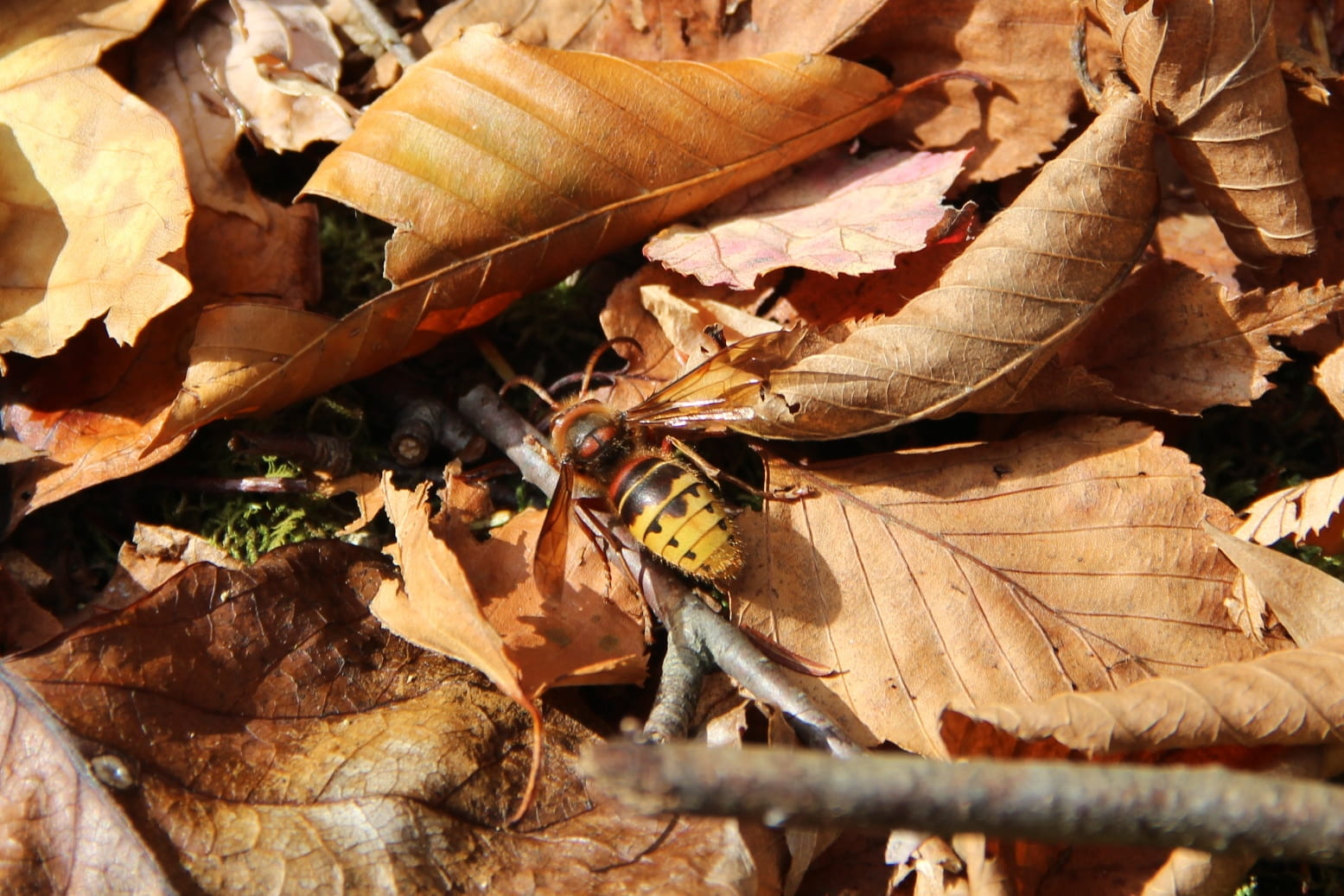
The European hornet (Vespa crabro) is the only true hornet in the northeastern US. It is an introduced species, most commonly seen in forested areas and farmland. The paper nest resembles that of a large yellowjacket nest, but it is usually tan, not gray. European hornets are social, predatory and beneficial, but they will occasionally bang into glass windows at night attracted by lights inside. Though they resemble cicada killer wasps, European hornets have very different habits.
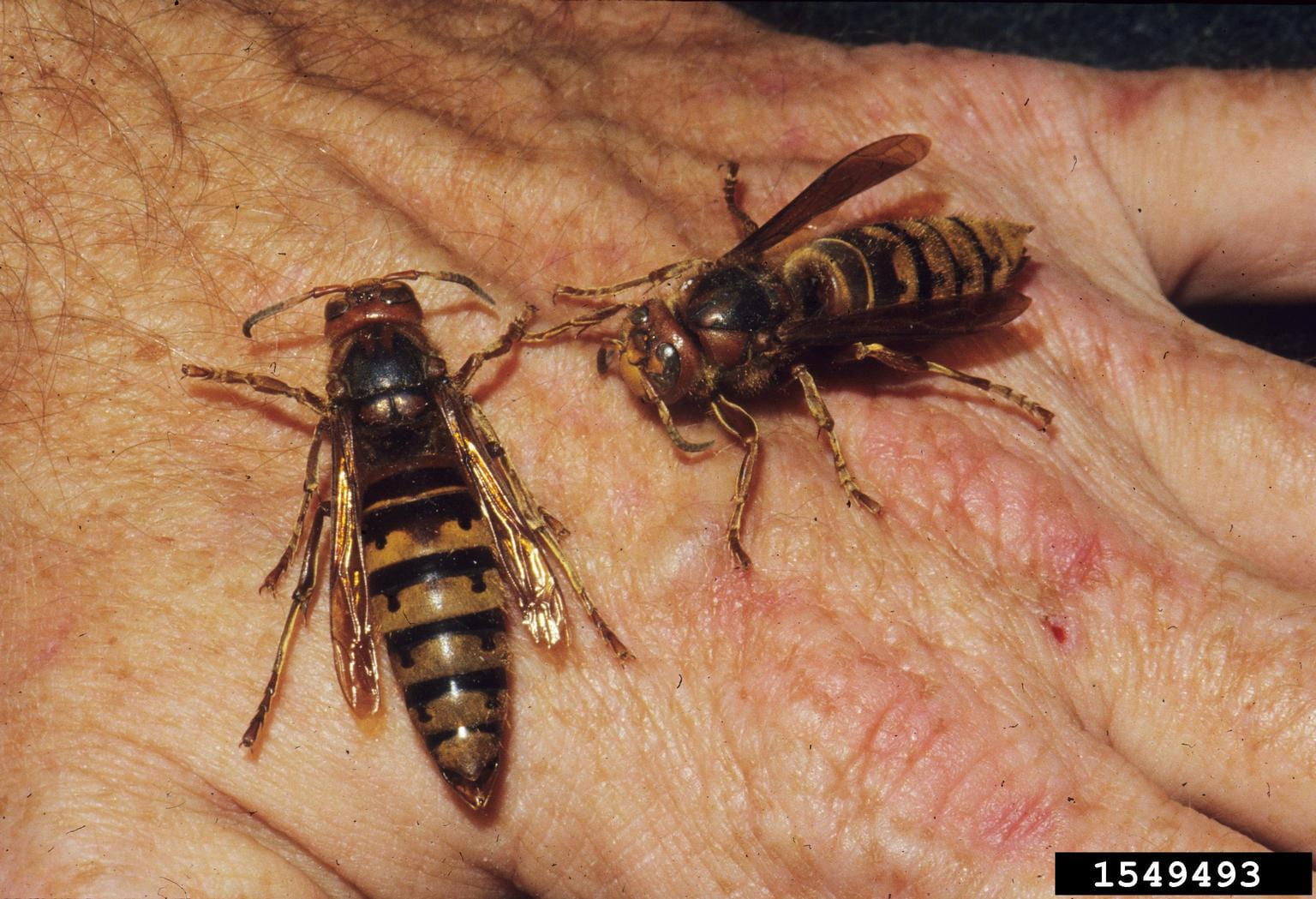
And now… the Asian giant hornet. So the answer is no. If you live in the northeast, you don’t have a murder hornet in your yard! You’ll see it in the news, but NOT HERE in the northeast. You might see European hornets or cicada killers.
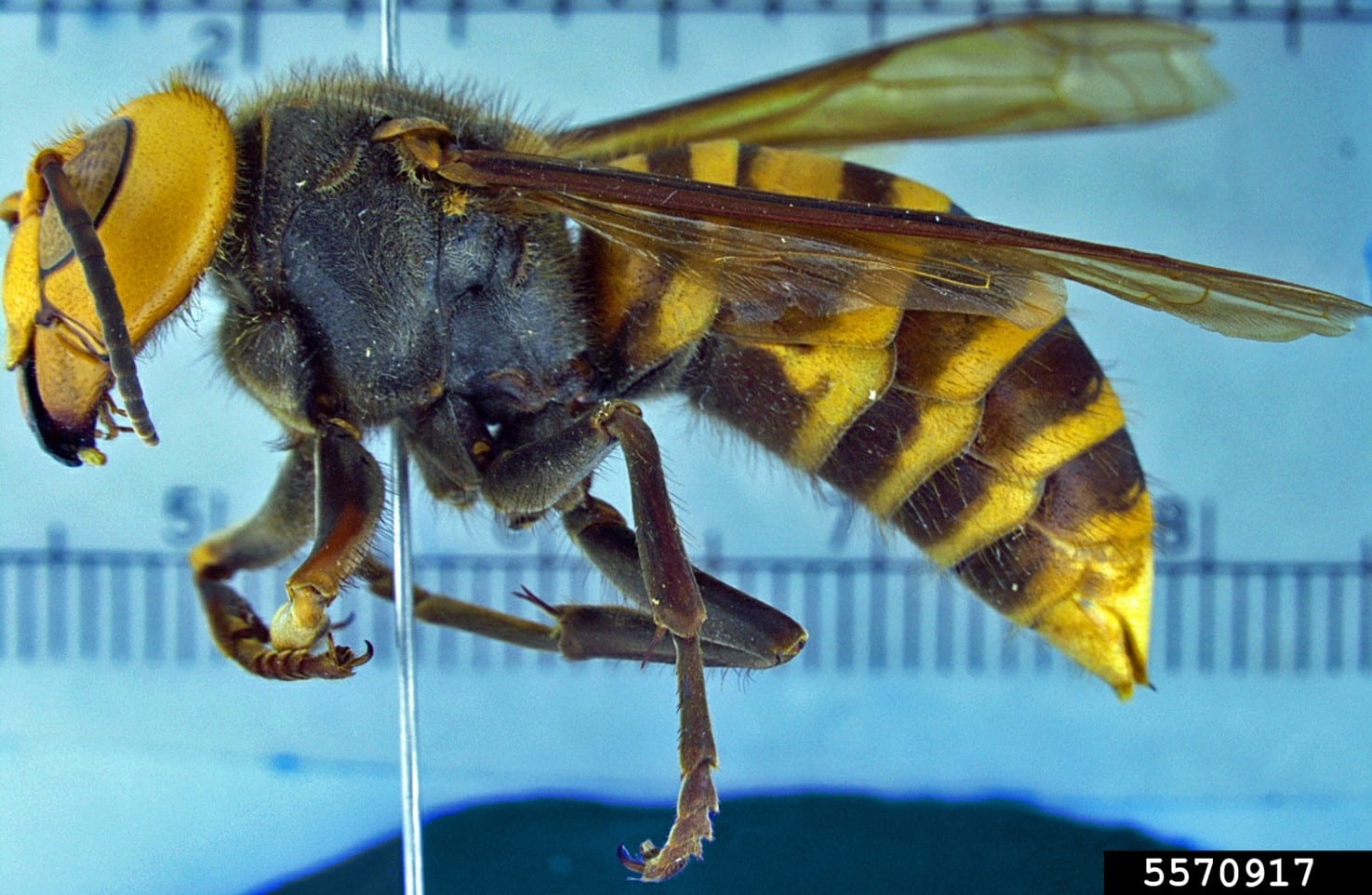
And if that big stinging insect is black and white? Definitely NOT an Asian giant hornet, European hornet or cicada killer wasp.
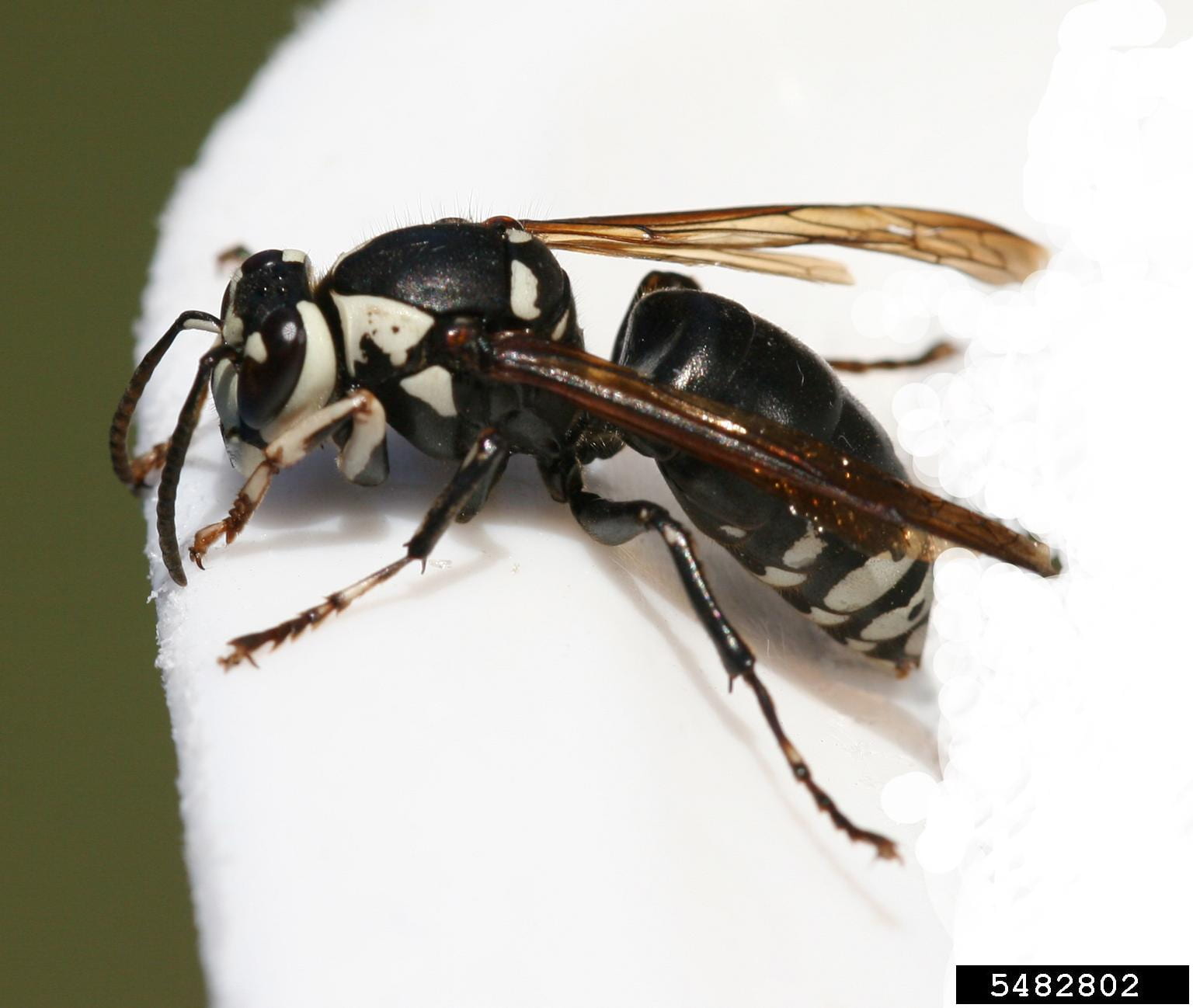
Our local cicada killer wasps have one purpose–find and use CICADAS, like this one below, as food for their young.
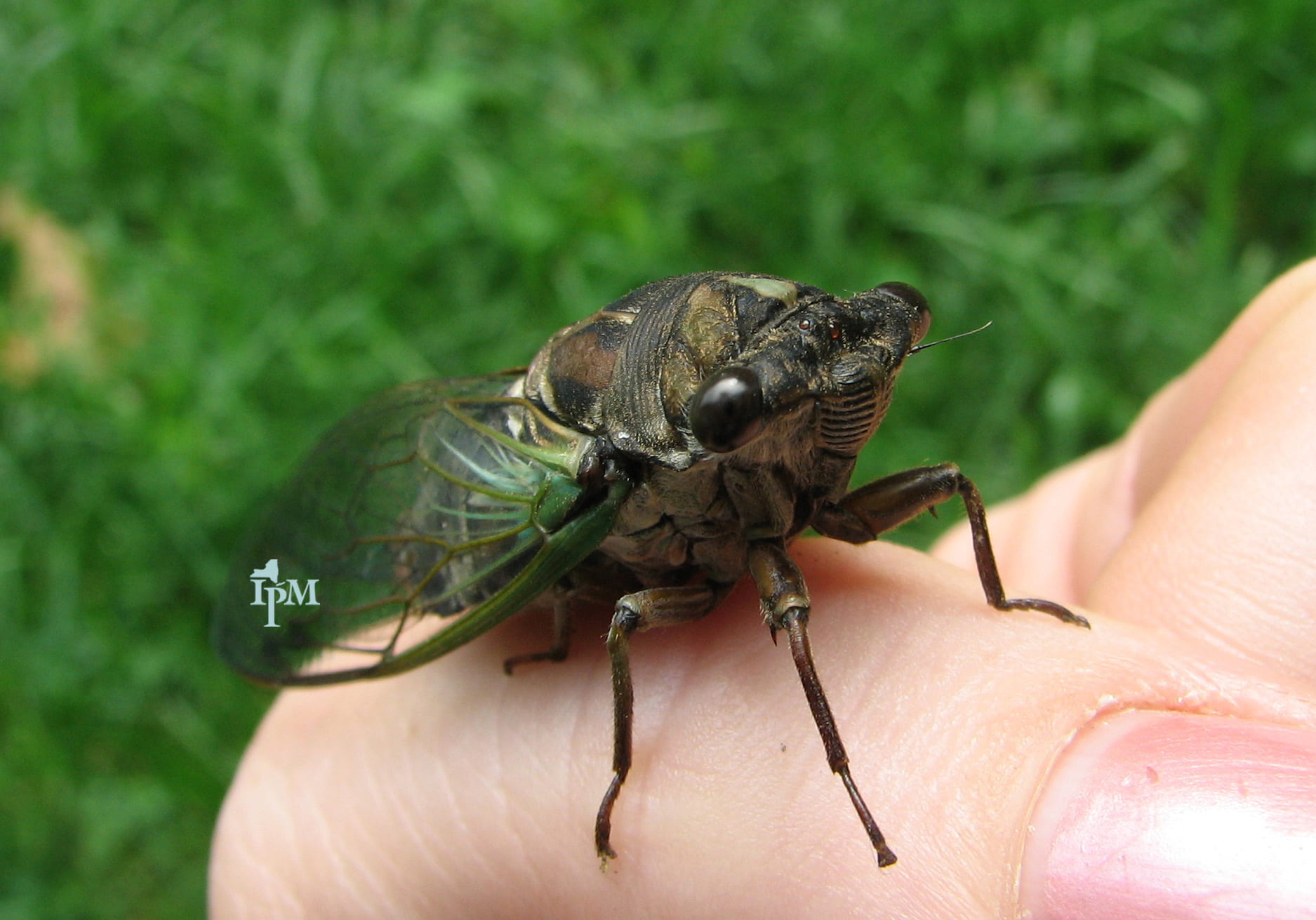
Not the famous periodical cicada, this is the species heard each and every summer. Cicadas are harmless, except that they can cause minor damage to ornamental trees.
Below, a cyclical, or periodical ‘brood’ cicada.
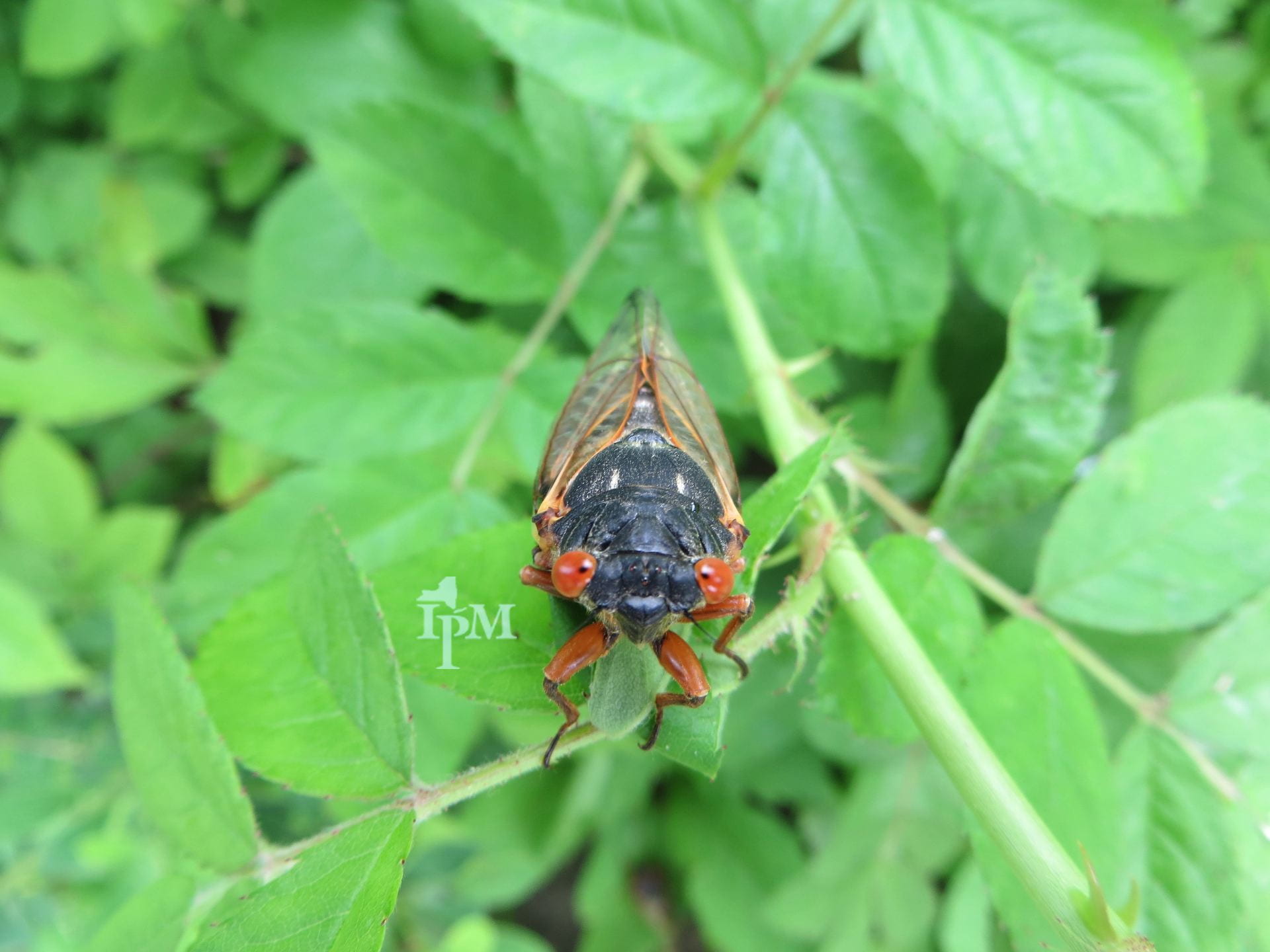
If there are cicadas around your property, you will likely hear the males singing during part of a hot day. It’s pretty common to find their cast skins.
Do cicadas damage anything? Yes, but it’s not leaf-feeding as you might think. After mating, females slice into the soft bark of twigs to deposit their eggs. With hundreds of eggs to deposit, the female creates many openings in the bark on twigs and small branches, causing “flagging” or dieback of some leaf clusters. Cicadas have a three stage life cycle, and that third stage, NYMPHS, can also cause problems. Nymphs hatch from those eggs, drop to the ground and find their ways into the soil where they first feed on grass roots and eventually, deeper into the soil, they feed on tree roots. (Penn State has a great article on cicadas.) So having cicada killer wasps is a good thing.
Despite what you might think about tree roots (some need a chainsaw to remove), smaller roots are susceptible, especially those ‘hair roots’ that do the work of taking up soil nutrients.
Here are some Cornell cicada resources: CCE Nassau fact sheet and Lecture on the 2013 Brood from Cornell Entomologist Cole Gilbert
and now for one last image:
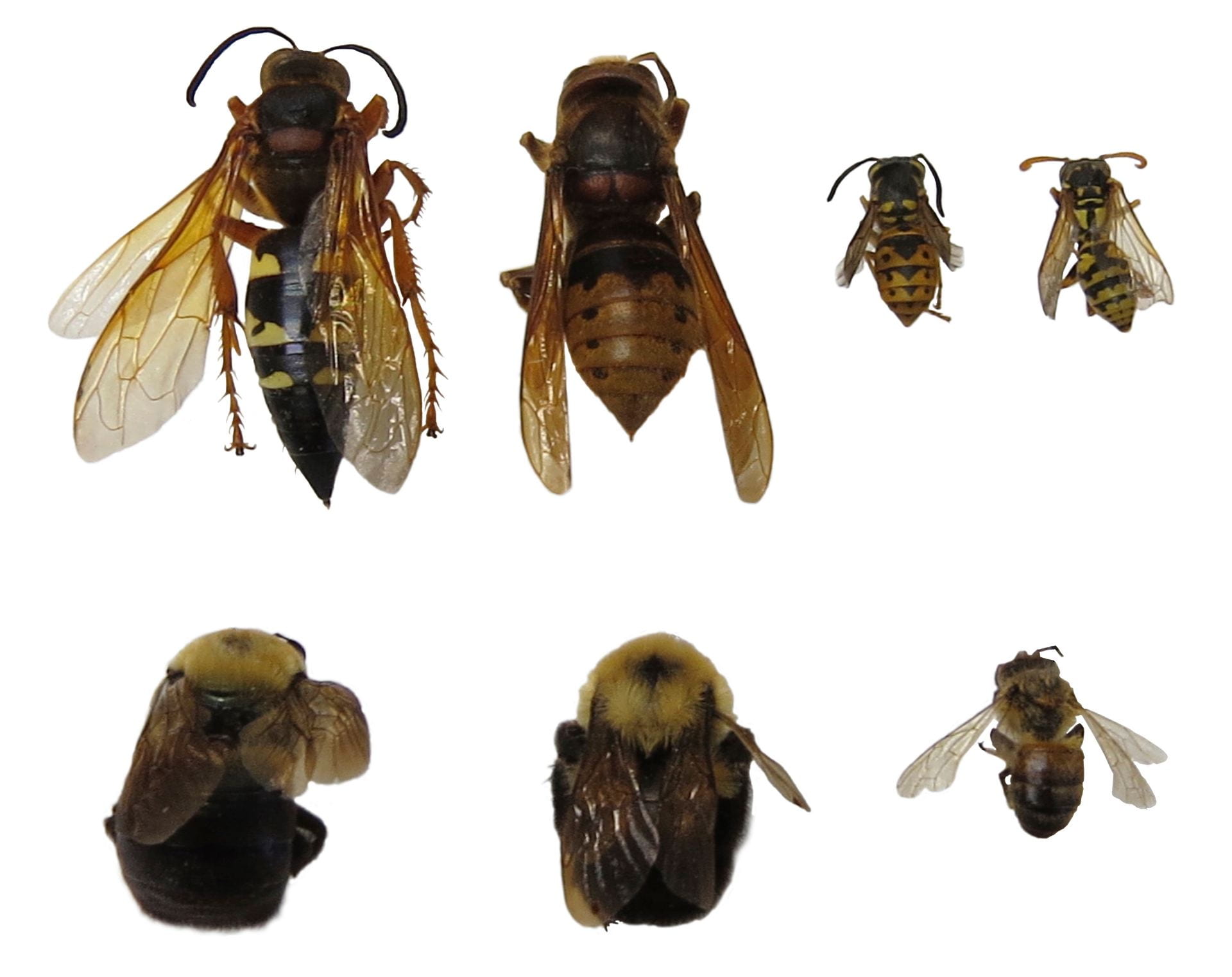
Top left to right: cicada-killer wasp, European hornet, yellowjacket, European paperwasp. Bottom left to right: carpenter bee, bumble bee, honey bee. In general, wasps have shiny bodies and lack hair, whereas bees have hair on their bodies.